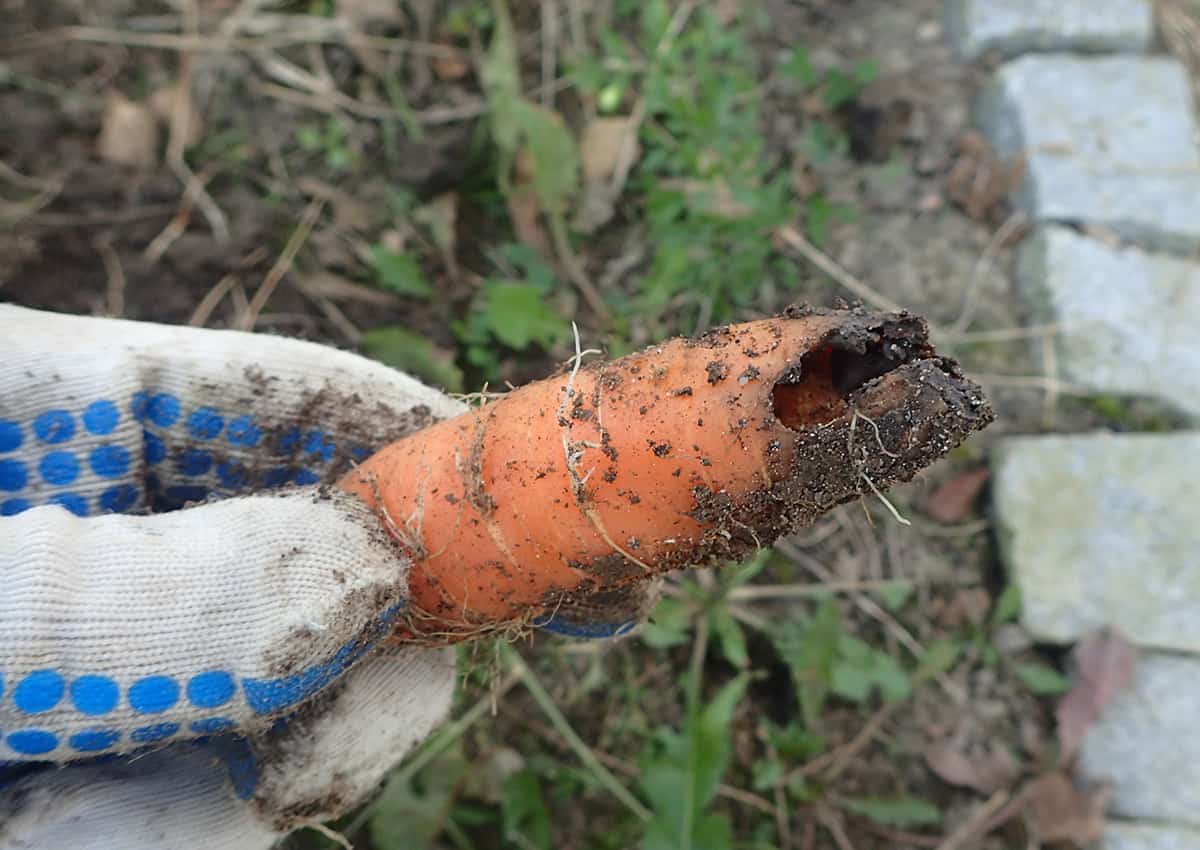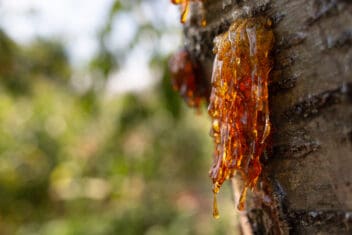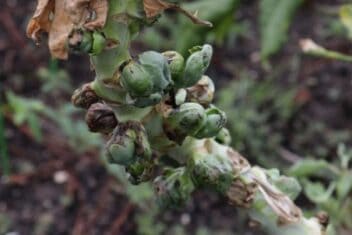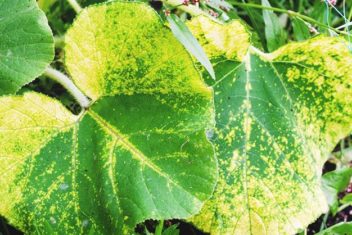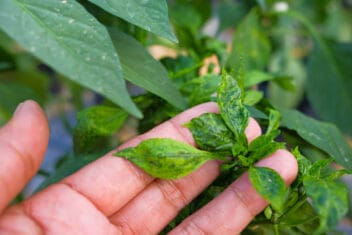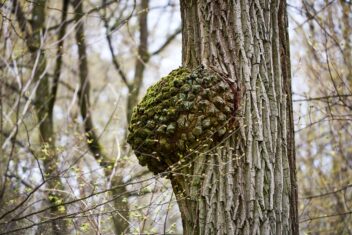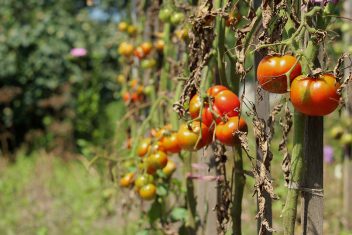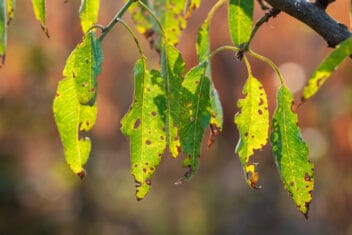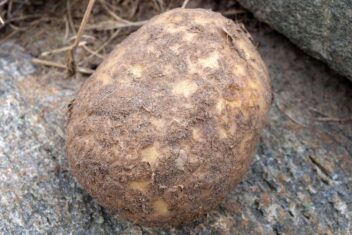Realizing that your carrot plants are dying is always heartbreaking, and it probably means that one of the common carrot pests and diseases is taking over your plants. The first step is to figure what’s happening, and then you can treat the problem appropriately.
Carrot plants are less likely than other veggies to experience pests and diseases, but this doesn’t mean it’s impossible. These plants still experience their share of problems, so gardeners need to know what to be prepared for.
9 Common Carrot Pests
When your carrot plants are dying, it’s smart to look at the common carrot pests. Some pests attack the greens, while others target the roots. Avoiding pests in the first place is about good gardening practices. That means watering appropriately, encouraging good bugs, and keeping your garden clean.
Here are a few of the most common pests and ways to handle them.
1. Aphids

Aphids are one of the most common pests on carrot plants. They like to feed on young carrot greens, causing the leaves to become yellow and wilt. That makes the roots become distorted.
Aphids only cause major problems in large numbers. In smaller populations, they’re no big deal. Releasing natural enemies into your garden such as ladybugs and lacewing larvae helps keep the aphid population under control. You also can use horticultural oil sprays like neem oil to control aphids. Learn more in our guide.
2. Carrot Root Flies
The worm stage of the carrot root fly attacks carrot and other root crops, feeding directly on the root system. Once you find carrot root flies, you need to harvest all of your carrots immediately because the pests spread rapidly, destroying all the roots. This pest attacks carrots, parsnips, and celeriac, and other plants in the carrot family.
The best way to avoid carrot root flies is to rotate your crops and deeply till your soil. You also can plant companion plants, like onions, nearby to discourage these pests.
3. Carrot Rust Fly
The biggest challenge of carrot rust flies is the maggots of this pest, which like to eat the small roots of the carrot plant and tunnel through the edible roots. The maggots cause a strange rust-colored material to develop inside of the tunnels they create, which is how the pests get their name.
On the exterior, carrot rust fly maggots cause the plants to turn yellow with stunted growth. Most plants eventually die. The problem is hard to identify at first because the green tops look healthy until the plant dies. When you remove the carrots, you’ll find maggots inside of your carrots.
Neem oil is one of the most effective treatments for the carrot rust fly.
4. Carrot Weevil
Adult carrot weevils are dark brown snout beetles that measure around six millimeters long. They live through the winter, overwintering in plant debris. If weevils infected your carrot plants the previous year, chances are these pests are in the soil, awaiting the next sowing of carrots.
Carrot weevils feed on the foliage, making holes in the greens, but it’s rare for the damage above ground to be severe. If you discover them in your roots one year, the best thing to get rid of them is to release predatory nematodes to eat up the larvae in your garden. Another option is to use pyrethrin sprays based on the manufacturer’s directions.
5. Celery Worms
Celery worms are sometimes called carrot caterpillars. These are the larva form of the black swallowtail butterfly. The adult butterflies have two rows of yellow spots on the outer border of the wings and light blue areas on the lower wings.
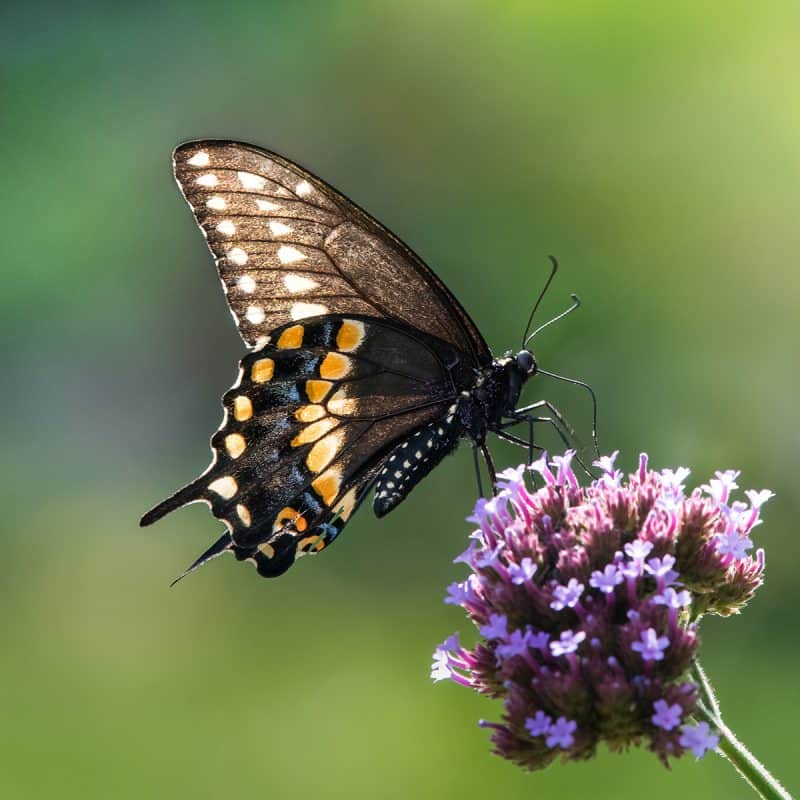
Celery worms like to hide on carrot plants, along with celery, parsley, and parsnip plants. These pests chew on the leaves and stems of the plants, eating all of the green tops off the carrot plants.
Typically, the best method to get rid of celery worms is to hand pick them off the plants. You also can try neem oil to get rid of these carrot pests.
6. Flea Beetles
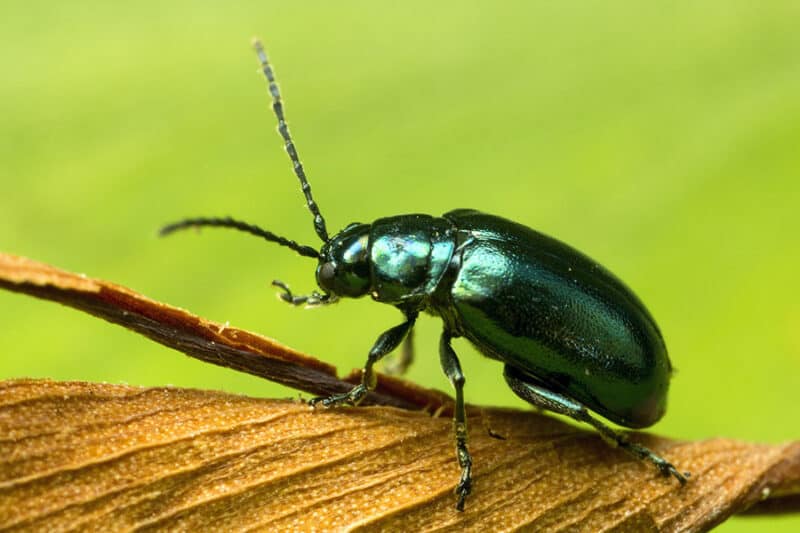
Flea beetles attack carrots, along with plants like cabbage, potatoes, eggplant, and spinach. They tend to appear in gardens in the early spring, eating small holes in the tender seedlings.
One of the biggest problems with flea beetles is that they tend to carry plant diseases. So, while they often don’t cause a lot of damage to the plants, they leave the plants vulnerable to serious diseases. Head over to our guide for more info.
7. Leaf Miners
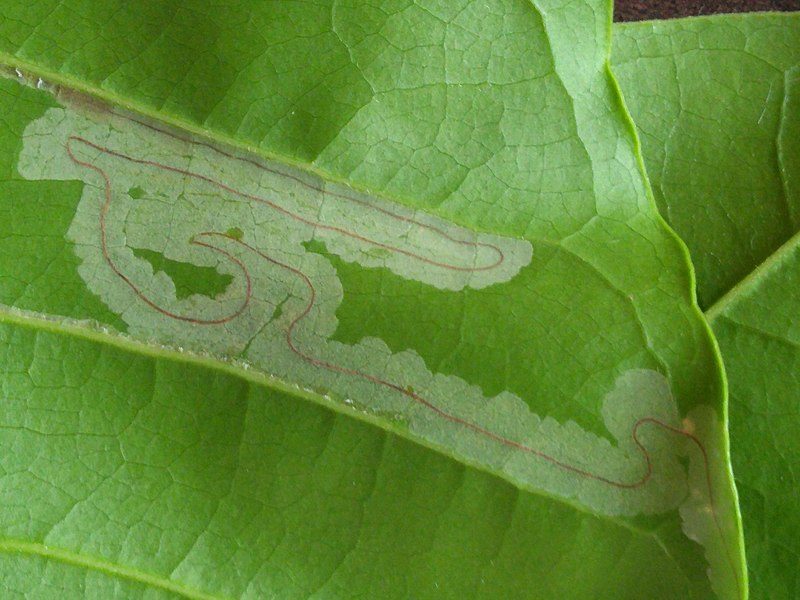
Leaf miners are pests that lay eggs in the spongy layer between the upper and lower surfaces of leaves. Most leaf miners are the larvae of moths, flies, beetles, or wasps. There are over 200 species of leaf miners, and each species attack different parts of the plants. Not all attack carrot plants, but the ones that do typically focus on seedlings.
Healthy adult carrot plants rarely suffer from leaf miner damage.
So, if they don’t cause a lot of physical damage, why are leaf miners such a problem? They give microbial pathogens and diseases an entrance point into the plants. Once your plants have leaf miners, diseases and bacteria are only a short time behind.
8. Nematodes
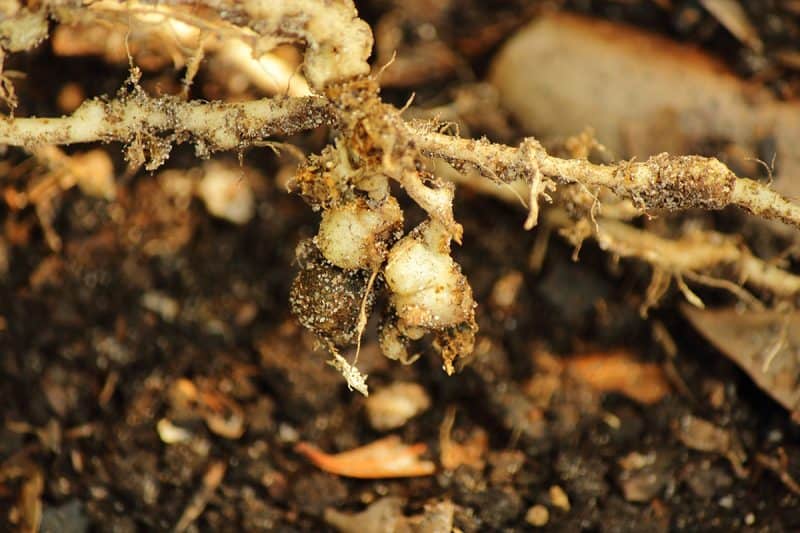
Nematodes are microscopic worms that live in the soil and feed on plant roots. Not all nematodes are damaging to plants (some are actually beneficial), and there are thousands of nematode species.
Bad species, like the root-knot nematodes, cause knots on the roots, making it impossible for the plants to bring up the nutrients they need throughout the rest of the plant. A nematode infestation quickly causes the death of your carrots.
Unfortunately, once your plants are infected with nematodes, it’s nearly impossible to eradicate them out of the soil.
9. Wireworms
One of the most common carrot pests is wireworms. These are slender, yellowish-brown, hard-bodied larvae from different beetles that like to infect carrots, celery, lettuce, turnips, and other plants. Wireworms puncture and tunnel through the stems, roots, and tubers of the plant.
Using homemade garlic spray gets rid of wireworms, but you also can collect these pests under a wooden board in your garden and remove the board, destroying it in a fire after.
5 Common Carrot Diseases
If pests aren’t the reason for your carrot plants dying, the next thing to consider is common diseases.
Carrot plants face numerous fungal and bacterial diseases. Use preventative measures like property spacing and watering to help your carrot plants stay healthy and disease-free.
1. Alternaria Leaf Blight
This fungal disease causes green-brown water-soaked lesions on the leaves that gradually enlarge, turning dark brown or black. Over time, the lesions cause the leaves to turn yellow and die.
Alternaria leaf blight is a fungal disease that appears when there is warm weather and moisture. It’s hard to control, but some fungicides take care of the issue if applied when symptoms first appear. Make sure you plant your carrots at the appropriate distance apart to increase air circulation.
2. Bacterial Leaf Blight
Bacterial leaf blight causes small, yellow spots to form on the leaves of the plant that gradually expand into irregularly shaped, water-soaked lesions. It causes the leaves to become brittle, curling, or distorting. The stalks might ooze as well.
This bacterial disease spreads by splashing infected soil onto the leaves by watering or rain. Planting pathogen-free seeds is the first good step to keeping this bacterium out of your garden. Gardeners should apply appropriate bactericides when bacterial leaf blight occurs in the garden.
3. Black Rot
Here is another common fungal carrot disease that causes the damping-off of seedlings, blighted foliage, black rings on the leaves, and sunken lesions on roots. It spreads rapidly throughout gardens, and it lives in the soil for up to eight years.
Black rot is hard to control once it happens in your garden. Practice crop rotation is a must, and you need to treat seeds with hot water before planting. Plant resistant varieties to help decrease the risk of your plants contracting black rot.
4. Cavity Spot
Cavity spot belongs in the oomycete category, and it causes sunken, gray lesions across the roots of the carrot plants. Then, the outer layer ruptures, and small vertical cracks start to form.
This is a strong fungus that persists for years in the soil. The best way to control it is with cultural practices and rotating crops. Applications of fungicides
5. Downy Mildew
Downy mildew is a fungal disease that causes a powdery growth on the leaves, stalks, and bracts. Severe infections cause the roots to become distorted. While it typically doesn’t kill your plant, downy mildew decreases the production of your plants, and it leaves your plants vulnerable to other diseases or pests.
Preventative measures are most effective when it comes to stopping downy mildew, but you can apply protective fungicides to defend your plants and to stop small infections. Sulfur applications also stop early infections in the growing season.
